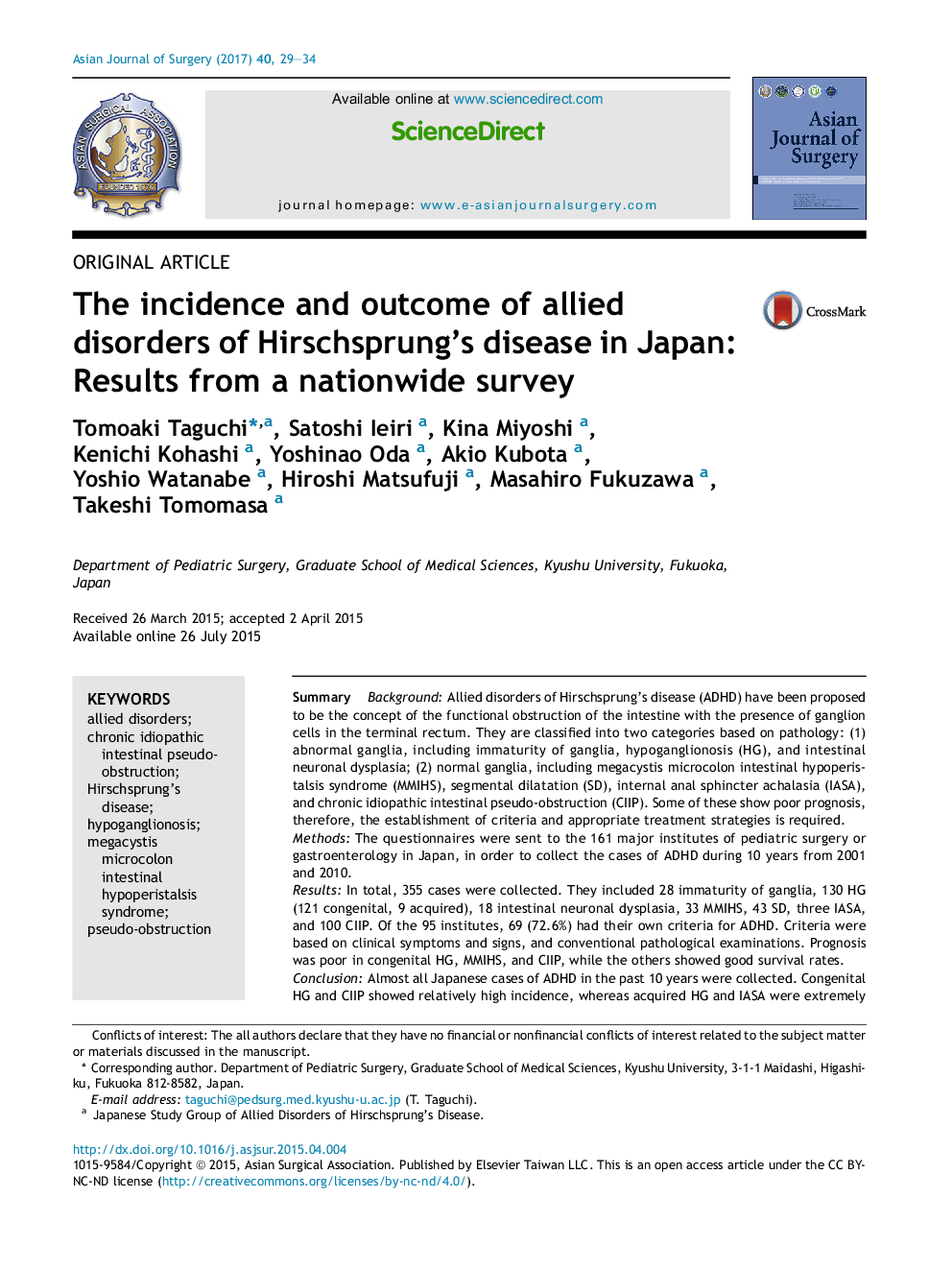| Article ID | Journal | Published Year | Pages | File Type |
|---|---|---|---|---|
| 5731481 | Asian Journal of Surgery | 2017 | 6 Pages |
SummaryBackgroundAllied disorders of Hirschsprung's disease (ADHD) have been proposed to be the concept of the functional obstruction of the intestine with the presence of ganglion cells in the terminal rectum. They are classified into two categories based on pathology: (1) abnormal ganglia, including immaturity of ganglia, hypoganglionosis (HG), and intestinal neuronal dysplasia; (2) normal ganglia, including megacystis microcolon intestinal hypoperistalsis syndrome (MMIHS), segmental dilatation (SD), internal anal sphincter achalasia (IASA), and chronic idiopathic intestinal pseudo-obstruction (CIIP). Some of these show poor prognosis, therefore, the establishment of criteria and appropriate treatment strategies is required.MethodsThe questionnaires were sent to the 161 major institutes of pediatric surgery or gastroenterology in Japan, in order to collect the cases of ADHD during 10 years from 2001 and 2010.ResultsIn total, 355 cases were collected. They included 28 immaturity of ganglia, 130 HG (121 congenital, 9 acquired), 18 intestinal neuronal dysplasia, 33 MMIHS, 43 SD, three IASA, and 100 CIIP. Of the 95 institutes, 69 (72.6%) had their own criteria for ADHD. Criteria were based on clinical symptoms and signs, and conventional pathological examinations. Prognosis was poor in congenital HG, MMIHS, and CIIP, while the others showed good survival rates.ConclusionAlmost all Japanese cases of ADHD in the past 10 years were collected. Congenital HG and CIIP showed relatively high incidence, whereas acquired HG and IASA were extremely rare in Japan. The criteria of each disorder were also collected and summarized. Prognosis was poor in congenital HG, MMIHS, and CIIP.
